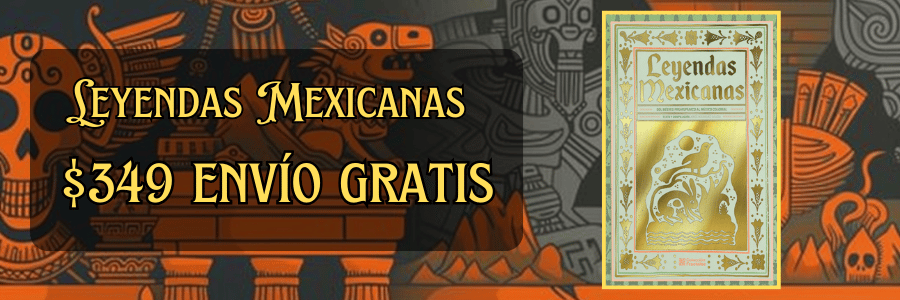The Impact of the Spanish Arrival on the Aztec Empire
The arrival of Spanish conquistadors in the early 16th century marked a turning point in world history, particularly for the indigenous empires of the Americas. Among these, the Aztec Empire stood as one of the most powerful and sophisticated societies, marked by impressive architectural achievements, complex social structures, and prosperous trade networks. However, the incursion of Spanish explorers and soldiers set in motion a series of events that would forever alter the trajectory of Mesoamerican history. The impact of this encounter was profound, resulting in dramatic shifts in political authority, cultural identity, and societal structures, leading ultimately to the collapse of the Aztec Empire.
At the forefront of this transformative period was Hernán Cortés, a Spanish conquistador who landed on the shore of what is now Mexico in 1519. Cortés, driven by the promise of wealth and glory, soon set his sights on the capital of the Aztec Empire, Tenochtitlan. At the time of the Spanish arrival, the Aztec Empire was a dominant force in Mesoamerica, encompassing present-day central Mexico and controlling a vast network of tributary states. The Aztecs had a rich culture steeped in religion, art, and a structured social order anchored by a powerful ruling class led by Emperor Moctezuma II.
The initial encounter between Cortés and the Aztecs was marked by curiosity and diplomacy rather than outright hostility. The Mexica people, as they called themselves, viewed the Spaniards through the lens of existing cultural beliefs, suspecting that Cortés might be a mythical figure foretold by their prophecies. Moctezuma II, interpreting the advance of these strange newcomers as an omen, received Cortés with reverence. This initial hospitality provided Cortés with critical leverage, allowing him to forge alliances with various indigenous groups discontent with Aztec rule. These alliances were instrumental in the Spanish strategy, as many indigenous peoples viewed the Aztecs as oppressors, burdened with heavy tributes and sacrificial demands.
As tensions mounted, the relationship between the Aztecs and the Spaniards shifted from one of cordiality to increasing hostility. The Spaniards, equipped with advanced weaponry, including firearms and cannon, and steel armor, presented a stark contrast to the traditional weapons of the Aztec warriors. The profound military disadvantage faced by the indigenous ranks was compounded by the psychological impact of the Spanish cavalry, which featured horses that were previously unknown to the Aztec people. Not only did these more sophisticated military technologies provide the Spaniards with a tactical advantage, but they also instilled fear among the Aztec forces.
The eventual skirmishes that erupted in Tenochtitlan culminated in the infamous siege of the city in 1520. Following a brief period of relative peace, hostilities erupted after a series of misunderstandings and provocations. The Aztecs captured some Spanish soldiers, and in retaliation, Cortés ordered an assault on Tenochtitlan, leading to a brutal confrontation characterized by fierce street battles and heavy casualties on both sides. Although the Aztec defenses were formidable, they were unable to withstand the relentless determination of the Spanish forces. The fall of Tenochtitlan in 1521 marked a watershed moment, as it symbolized the collapse of the last great indigenous empire in the Americas.
The consequences of the Spanish conquest were catastrophic for the indigenous population of Mexico, not only politically but also demographically. The introduction of European diseases, such as smallpox, measles, and influenza, to which the indigenous population had no immunity, triggered a devastating epidemic. It is estimated that in the wake of the Spanish invasion, as much as 90% of the native population perished due to these diseases within a couple of generations. The demographic collapse contributed to social upheaval, weakening the remnants of traditional governance structures and further facilitating Spanish control over the region.
The socio-political landscape of the former Aztec Empire quickly began to change under Spanish rule. The Spaniards established new colonial institutions, diempowered the traditional leadership of the Aztec elite, and imposed a new governance model that was more beneficial to their interests. The introduction of the encomienda system allowed Spanish settlers to exploit indigenous labor, effectively perpetuating a new form of servitude among the surviving native population. This resulted in significant alterations of the traditional roles and societal hierarchies that had previously defined Aztec life.
Culturally, the impact of the Spanish arrival was equally profound, marked by the forced imposition of Christianity and European cultural traditions. The Spanish authorities sought to convert indigenous peoples to Catholicism, viewing the Aztecs' polytheistic practices as a threat not only to their theological beliefs but also to the overall stability of their colonial rule in the region. The abolition of Aztec religious practices and the destruction of temples can be considered cultural eradication, as the Spaniards strove to “civilize” the indigenous population under the guise of religious salvation.
Despite these efforts to impose a new order, an intricate process of cultural syncretism emerged, wherein elements of both Spanish and indigenous traditions coalesced. Many aspects of Aztec culture found their way into colonial customs, resulting in a unique hybrid of Mexican identity that endures to this day. This syncretism can be observed in religious practices, art, language, and festivals, underscoring a resilient indigenous identity that persisted despite colonial domination.
Furthermore, the legacy of Spanish colonization has had lasting implications on Mexico's socio-economic landscape. The restructuring of land ownership patterns led to significant shifts in economic power dynamics. The concentration of land into the hands of Spanish colonial elites against a backdrop of widespread dispossession of indigenous lands contributed to enduring inequalities and social injustices that would resonate through centuries, shaping the nation in both the colonial and post-colonial periods.
Additionally, the encounter between the Spanish conquistadors and the Aztecs ignited a broader wave of exploration and conquest throughout the Americas. Following Cortés's success, other European powers were quick to capitalize on the perceived potential for riches and territorial expansion, leading to further subjugation of indigenous peoples across the continent. The patterns of colonization framed the relationship between European powers and indigenous populations, leading to centuries of conflict, resistance, and forced assimilation.
In evaluating the full impact of the Spanish arrival on the Aztec Empire, it is crucial to recognize not only the immediate consequences of conquest and collapse but also the long-term ramifications that shaped the course of Mexican and Latin American history. As indigenous communities adjusted to the new geopolitical realities of Spanish rule, they exhibited resilience through the preservation of cultural traditions, adaptation to changing environments, and resistance to colonial impositions.
The Spanish conquest of the Aztec Empire represented a complex interplay of factors that led to the demise of one of Mesoamerica’s most formidable civilizations. From the initial contacts marked by diplomacy and mutual curiosity to the eventual violence and conquest, the relationship between the Aztecs and the Spanish evolved rapidly, culminating in a cataclysmic transformation that reverberated across generations. While the Aztec Empire may have fallen, the legacy of its rich culture persists, continuing to inform the identity of modern Mexico and serving as a reminder of the resilience of indigenous peoples in the face of conquest and colonization.
In conclusion, the impact of the Spanish arrival on the Aztec Empire serves as a poignant study of the transformative forces of colonization. The socio-political upheaval, cultural exchanges, demographic shifts, and enduring ramifications of this fateful encounter continue to shape our understanding of Mesoamerican history and its lasting influence on contemporary society. The legacy of the Aztecs, marked by both confrontation and contribution, endures as an integral part of the historical narrative of Mexico, reflecting the complexities of colonial encounters and the resilience of indigenous cultures throughout the ages.
Explore More:
| How Mexico is Supporting Women Entrepreneurs |
| The Role of Intellectuals in Shaping Mexican Policy Post-Revolution |
| Mexico’s Growing Tech Industry: A Look at Innovation Hubs |
| The Battle of Puebla: A Victory That Reverberated Around the World |
| The Influence of Mexican Muralists on 20th-Century Art Movements |
| The Social Divisions Highlighted by Mexico’s War of Reform |
| The French Empire’s Ambitions in Latin America: The Mexican Adventure |
| The Role of Disease and Hardship in the Mexican-American War |
| The Impact of the Mexican-American War on U.S. and Mexican Relations |
| Colonial Mexican Baptismal Records: Insights into Social Hierarchy and Race |



